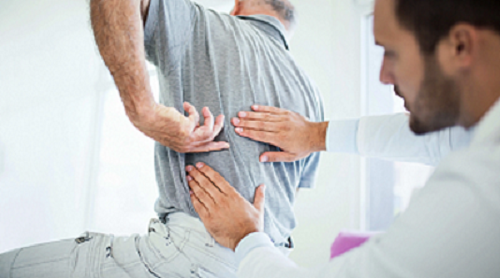
10 Jun 2013 (TOI): An increasing number of people in their 20s and 30s are suffering from stress-induced back pain, observe experts. Are you one of them?
With technological advancement, strenuous physical labour is steadily on the decline. Today, most educated youngsters spend their working hours in front of the computer; they hardly step out of their air-conditioned offices. This sedentary lifestyle has its own share of problems, including stress-induced back pain that is on the rise among people in their 20s and 30s. Read on to find out more. Stress is the culprit
Homeopathic physician and stress counsellor Dr Yatri Thacker recalls a patient, who was referred to her by an orthopedic doctor. The 32-year-old woman, Meeta Manek (name changed), had been complaining of back pain for two years — it started a year after her marriage. She also felt weak and dull. She consulted an orthopedic specialist, but in vain. Her X-rays and blood reports were normal.
“After studying her case, I realised that she had conflicts with her husband and in-laws and was depressed and hurt. Her physical symptoms were stress-induced or psychosomatic. Physical symptoms caused by stress are called psychosomatic disorders. They include migraine, urticaria, eczema, psoriasis, irritable bowel syndrome, hairfall, allergic rhinitis, etc. After constitutional homeopathic medication and counselling for a few months, Meeta was cured,” says Dr Thacker.
Symptoms
Dr Ram Chaddha lists the following symptoms: - A generalised feeling of heaviness in the lower back - Weakness - Aversion to some physical or mental activity which worsens the problem.
Akin to Tension Myositis Syndrome
In cases of stress-induced back pain, symptoms are expressed by patients, but their medical reports may not indicate any problem. It is similar to Tension Myositis Syndrome with (TMS), a psychosomatic disorder that produces pain because of stress, says spine surgeon Dr Ram Chaddha.
Why it happens?
When people are under stress, their muscles tighten. Though not harmful, it could turn painful because tightened muscles squeeze the blood vessels, blocking normal blood flow. This deprives the muscles of oxygen and leads to pain, explains Dr Thacker.
The young are vulnerable
Those with desk-bound jobs — for example, IT professionals and bank and call centre employees — are more prone to the problem. People who indulge in heavy weight-lifting, bending and standing for long periods are also equally at risk. Weight has nothing to do with the problem.
Yoga trainer and acupuncture therapist Yogesh Chavan, who meets an increasing number of people in their 20s and 30s with stress-induced back pain, says, “There is a lot of competition in every field, especially corporate. In the rat race, youngsters neglect fitness — they work long hours, do not take rest and skip meals. All this leads to stress. Also, sitting in one position for long hours strains the back.”
Causes
Though stress is a major reason, it is not the only one. Orthopedic consultant and surgeon Dr Umesh Shetty explains, “Causes include strain on the back due to bad posture, sleeping on sagging mattresses, lifting and bending incorrectly, overdoing any activity, lack of exercise, overweight and some spine-related problems.” Deficiency of vitamins D3 and B12 can also trigger the problem. Occasionally, there may an endocrinological or gynaecological cause.
Treatment
Patients need to be checked for deficiency — nutrition or malabsorption-linked — and endocrinological/rheumatological/uro-genital causes. X-rays with CT or MRI of the lower back may be needed, if no other cause is indicated by blood tests.
It is ultimately a diagnosis of exclusion; elimination of all other causes. If no cause is found, reassurance with rehabilitation — physical and mental — is initiated, advises Dr Chaddha.
Yoga
Chavan recommends deep-breathing exercises, which increase oxygen level in the blood. These have a calming effect, thus lowering anxiety and stress levels. Pranayam Jivha Shitali is also good. He says, “Once stress is controlled, the pain will reduce. Simple stretching exercises like forward bend (Supta Padmasan), back bend (Ushtrasan) and twisting and side stretches (Padma Vakrasaan) are recommended to keep the back flexible and toned. Getting up from your seat after every two hours is also advisable.”
Self-medication
Self-medication may help in case of minor, self-limiting ailments. But, if the response to standard painkillers is not satisfactory even after a week, visit a spine specialist, cautions Dr Chaddha.
Dr Yatri Thacker is a Homeopathic wellness physician, Mental Health expert and founder- director of Baby & Me Programs, practising in Mumbai in the past 18 years.

Dr Yatri Thacker